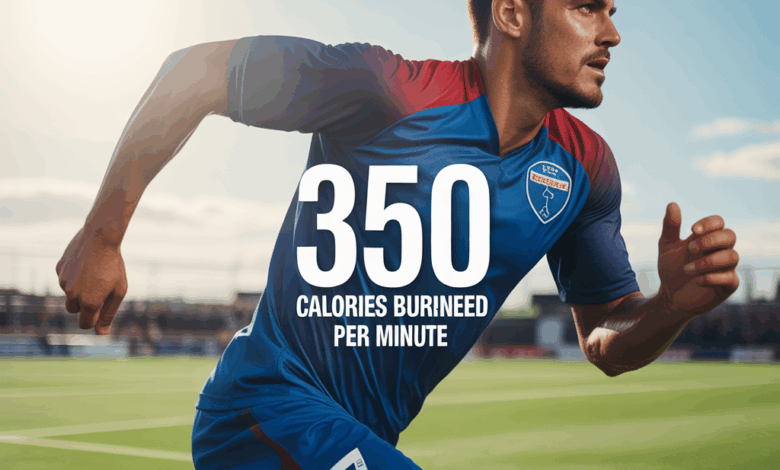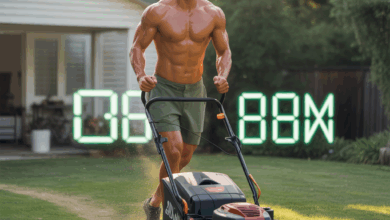How Many Calories Do You Burn Playing Soccer? Real Numbers & Practical Tips

Ever stepped off the field after a scrappy pick-up game and wondered, “How many calories did I just burn?” Whether you’re trying to lose weight, fuel training, or track your fitness, knowing your soccer calorie burn can be surprisingly motivating. Let’s break down realistic numbers, why they vary, and how to maximize the energy you burn while still having fun.
Why soccer is a great calorie-burning sport
Soccer is a high-intensity, stop-and-go sport that blends aerobic endurance, sprinting, agility, and skill. Because of this mix—continuous jogging, repeated sprints, quick changes of direction, and short anaerobic bursts—soccer produces a high calorie expenditure compared with steady-state activities like jogging at a constant pace.
How many calories do you burn playing soccer? Real numbers and examples
Calorie burn depends on body weight, intensity (recreational vs competitive), and duration. A useful way to estimate energy expenditure is the METs method. Recreational play often sits around 7 METs, while competitive matches can reach 10 METs or higher.
Estimated calories burned per hour (by example)
- 68 kg (150 lb), recreational (≈7 METs): ~500 kcal/hour
- 70 kg (154 lb), recreational (≈7 METs): ~515 kcal/hour
- 82 kg (180 lb), recreational (≈7 METs): ~600 kcal/hour
- 91 kg (200 lb), recreational (≈7 METs): ~670 kcal/hour
- Competitive intensity (≈10 METs): roughly 1.4× higher—about 700–900+ kcal/hour depending on weight
So a 90-minute match for a 70 kg player could burn roughly 770 kcal at recreational intensity and over 1,100 kcal at competitive intensity. These are averages—the real number depends on how much you sprint, rest, and your individual metabolism.
Factors that affect soccer calorie burn
- Intensity: Small-sided games (3v3, 5v5) often require more continuous effort and raise calorie burn compared with a relaxed 11v11.
- Position and role: Midfielders typically cover more ground than goalkeepers and often burn more energy.
- Body weight and composition: Heavier players burn more calories for the same activity; lean muscle mass increases resting metabolic rate.
- Fitness & conditioning: Fitter athletes may perform more high-intensity work, increasing total energy expenditure.
- Environment: Heat, altitude, and field conditions influence effort and caloric cost.
Practical ways to increase calorie burn during soccer sessions
If your goal is to increase energy expenditure while improving skill and fitness, try these targeted approaches.
Workout variations and drills
- Small-sided games (3v3, 4v4): More touches, fewer players, higher intensity.
- High-intensity interval training (HIIT): 20–30 seconds all-out sprint, 40–60 seconds active recovery—repeat 8–12 rounds.
- Sprint ladders: Short sprint + quick change-of-direction drills to mimic game bursts.
- Conditioning circuits: Combine bodyweight strength, plyometrics, and ball work for metabolic training.
Sample session to maximize burn (60 minutes)
- 10 min dynamic warm-up with ball (mobility + passing)
- 15 min high-intensity interval drills (6–8 sprints, 30s rest)
- 20 min small-sided game (3v3 or 5v5)
- 10 min skill work and cooldown
- 5 min mobility and stretching
Nutritional and lifestyle tips to support calories burned
Burning calories is only one piece of the puzzle. To perform well and recover efficiently, manage nutrition, hydration, and recovery.
- Pre-session: Eat a balanced meal 2–3 hours before play—carbs + moderate protein + little fat. Quick snacks (banana, toast) 30–60 minutes out if needed.
- During play: For sessions under 75 minutes, water is often enough. For longer or intense matches, consider a sports drink to replace electrolytes and carbs.
- Post-session: Aim for 20–30 g protein within an hour and replenish carbs to restore glycogen (especially after matches).
- Sleep & recovery: Prioritize 7–9 hours of sleep for hormonal balance, appetite control, and muscle repair.
Tracking your calorie burn: tools and tips
Wearables (GPS watches, heart-rate monitors) provide personalized estimates and are generally better than generic calculators. Use perceived exertion and distance covered as simple proxies—if you sprint often and cover a lot of ground, expect higher calorie burn. Consistency of tracking helps you understand trends over time.
Real-world examples and outcomes
A recreational adult playing 2×60-minute sessions per week may burn 1,000–1,200 kcal per week from soccer alone—add in training sessions and lifestyle activity and that contributes meaningfully to weight management and cardiovascular health. Elite youth players training 6 days a week can burn much more, which requires careful caloric intake and recovery planning to avoid fatigue.
Frequently Asked Questions
It depends on weight and intensity. For a 70 kg player, expect ~770 kcal at recreational intensity (7 METs) and ~1,100+ kcal at competitive intensity (10 METs). Variability comes from rest periods, substitutions, and how much sprinting you do.
Soccer can burn similar or more calories than running because of high-intensity bursts and variable tempo. Plus, soccer builds agility and strength. For weight loss, adherence and total weekly energy balance matter most—choose what you enjoy and can do consistently.
Fitness trackers give useful trends but can over- or under-estimate calories for intermittent sports. Heart-rate-based devices and GPS units are more accurate than wrist-only trackers. Combine tracker data with perceived exertion for best results.
Conclusion — Take control of your soccer calorie burn
So, how many calories do you burn playing soccer? Typically 400–900 kcal per hour depending on your body weight and intensity—with 90-minute matches often pushing numbers higher. Use small-sided games, interval drills, and consistent tracking to increase calorie burn while improving skill. Pair smart nutrition and recovery strategies to support performance and results.
Ready to turn your soccer sessions into a strategic fat-burning and fitness tool? Try one of our targeted small-sided workouts and check our workout routines, browse practical nutrition guides, and review recovery strategies in our wellness tips to build a plan that fits your goals.





